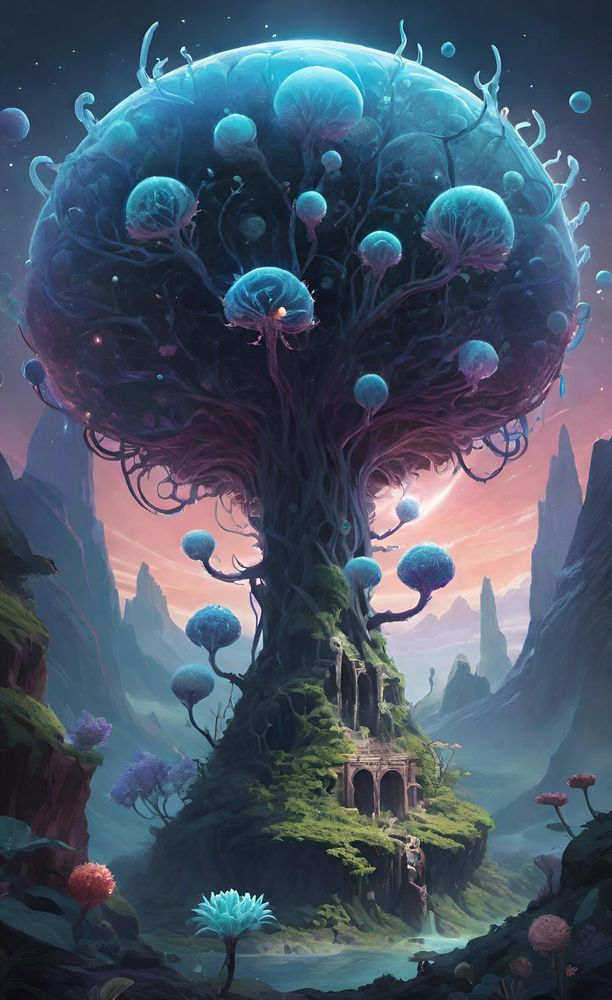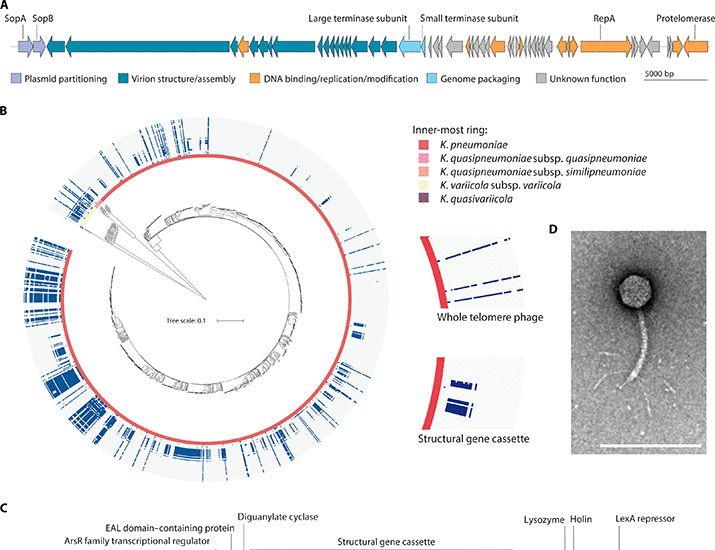Debnath Ghosal
@debnathghosal.bsky.social
CryoEM, Structural Cell Biology. Group Leader@University of Melbourne. #NHMRC Emerging Leadership Fellow. Formerly at @Caltech, @MRC_LMB.
Great stuff @joshuamhardy.bsky.social ! Congratulations.
I am thrilled to release ProteinDJ: a high-performance and modular protein design pipeline. Our open-source workflow incorporates #RFdiffusion, #ProteinMPNN, #FAMPNN, #AlphaFold2 and #Boltz-2. It is a fast, free, and fun way to design proteins (1/5)
doi.org/10.1101/2025.09.24.678028 #proteindesign
doi.org/10.1101/2025.09.24.678028 #proteindesign

September 29, 2025 at 3:07 AM
Great stuff @joshuamhardy.bsky.social ! Congratulations.
Reposted by Debnath Ghosal
This is an amazing paper led by the Grinter lab on bacterial protein antibiotics called pyocins and the mechanism by which they inhibit the BAM outer membrane complex. @rhyswg.bsky.social, @knottrna.bsky.social, @debnathghosal.bsky.social, @doylemt1.bsky.social, @fabianmunder.bsky.social

A Protein Antibiotic Inhibits the BAM Complex to Kill Without Cell Entry
Many antibiotics are ineffective against Gram-negative pathogens such as Pseudomonas aeruginosa because they cannot penetrate the bacterial outer membrane. Here, we show that protein antibiotics calle...
www.biorxiv.org
September 20, 2025 at 8:46 AM
This is an amazing paper led by the Grinter lab on bacterial protein antibiotics called pyocins and the mechanism by which they inhibit the BAM outer membrane complex. @rhyswg.bsky.social, @knottrna.bsky.social, @debnathghosal.bsky.social, @doylemt1.bsky.social, @fabianmunder.bsky.social
We recently discovered a brand-new (and unique!) anti-phage defense system in bacteria. Check out this Pursuit article from @Melbourne University featuring our recent work. Terrific effort from our PhD student Somavally!
lnkd.in/geXUApmK
lnkd.in/geXUApmK

September 10, 2025 at 2:23 PM
We recently discovered a brand-new (and unique!) anti-phage defense system in bacteria. Check out this Pursuit article from @Melbourne University featuring our recent work. Terrific effort from our PhD student Somavally!
lnkd.in/geXUApmK
lnkd.in/geXUApmK
3 months, 3 thesis orations: a hat-trick moment for the lab!! 🎓🥳.
This time, Bindusmita in the spotlight! ✨ She delivered a fantastic thesis oration, packed with fascinating data and insights 🦠 ❄️ 🔬. It has been an absolute joy mentoring her. Huge congratulations @bindusmitapaul.bsky.social
This time, Bindusmita in the spotlight! ✨ She delivered a fantastic thesis oration, packed with fascinating data and insights 🦠 ❄️ 🔬. It has been an absolute joy mentoring her. Huge congratulations @bindusmitapaul.bsky.social

September 2, 2025 at 12:41 PM
3 months, 3 thesis orations: a hat-trick moment for the lab!! 🎓🥳.
This time, Bindusmita in the spotlight! ✨ She delivered a fantastic thesis oration, packed with fascinating data and insights 🦠 ❄️ 🔬. It has been an absolute joy mentoring her. Huge congratulations @bindusmitapaul.bsky.social
This time, Bindusmita in the spotlight! ✨ She delivered a fantastic thesis oration, packed with fascinating data and insights 🦠 ❄️ 🔬. It has been an absolute joy mentoring her. Huge congratulations @bindusmitapaul.bsky.social
Reposted by Debnath Ghosal
My longest ever running project, all the stars finally aligned after 13 years! Thank you to Eric Reynolds group for sharing the journey. #bio21-institute, #university-of-melbourne. @sepidehv.bsky.social @craigmorton.bsky.social @debnathghosal.bsky.social
www.nature.com/articles/s41...
www.nature.com/articles/s41...

Insights into type IX secretion from PorKN cogwheel structure bound to PorG and attachment complexes - Nature Communications
Type IX secretion system (T9SS) is required for protein export in the Bacteroidota. Here, the authors obtain structure of T9SS PorKN ring which resembles a cogwheel that may have a rotational movement...
www.nature.com
August 19, 2025 at 9:59 PM
My longest ever running project, all the stars finally aligned after 13 years! Thank you to Eric Reynolds group for sharing the journey. #bio21-institute, #university-of-melbourne. @sepidehv.bsky.social @craigmorton.bsky.social @debnathghosal.bsky.social
www.nature.com/articles/s41...
www.nature.com/articles/s41...
Our collaborative work on the T9SS is just out in Nature Communications! Fantastic work led by Dhana Gorasia and Eric Hanssen. This paper reveals the structure of the T9SS outer membrane PorKN ring complex and mechanistic insights into protein secretion. www.nature.com/articles/s41...

August 20, 2025 at 1:21 PM
Our collaborative work on the T9SS is just out in Nature Communications! Fantastic work led by Dhana Gorasia and Eric Hanssen. This paper reveals the structure of the T9SS outer membrane PorKN ring complex and mechanistic insights into protein secretion. www.nature.com/articles/s41...
📣 New paper alert! Just out in Cell Reports! pubmed.ncbi.nlm.nih.gov/40644298/
Thrilled to share that we have discovered a brand-new anti-phage defense system! Bacteria have evolved various defense strategies (CRISPR etc) to counter phage attacks. We found a new one - fascinating and dramatic
⚔️🦠❄️🔬
Thrilled to share that we have discovered a brand-new anti-phage defense system! Bacteria have evolved various defense strategies (CRISPR etc) to counter phage attacks. We found a new one - fascinating and dramatic
⚔️🦠❄️🔬
August 2, 2025 at 3:01 PM
📣 New paper alert! Just out in Cell Reports! pubmed.ncbi.nlm.nih.gov/40644298/
Thrilled to share that we have discovered a brand-new anti-phage defense system! Bacteria have evolved various defense strategies (CRISPR etc) to counter phage attacks. We found a new one - fascinating and dramatic
⚔️🦠❄️🔬
Thrilled to share that we have discovered a brand-new anti-phage defense system! Bacteria have evolved various defense strategies (CRISPR etc) to counter phage attacks. We found a new one - fascinating and dramatic
⚔️🦠❄️🔬
Reposted by Debnath Ghosal
Thoughts from our own Tom Rapoport on the role of basic science in curing disease. magazine.hms.harvard.edu/articles/rev...

“Revolutionary Science Comes from Unexpected Angles”
magazine.hms.harvard.edu
July 29, 2025 at 4:00 PM
Thoughts from our own Tom Rapoport on the role of basic science in curing disease. magazine.hms.harvard.edu/articles/rev...
Amazing insights!
Of the 10 defense systems originally discovered in Doron et al 2018, Kiwa was one of the last to be studied - until now
Kiwa is a membrane-embedded complex activated in phage attachments sites to degrade phage DNA
A nice study by the Nobrega lab
Kiwa is a membrane-embedded complex activated in phage attachments sites to degrade phage DNA
A nice study by the Nobrega lab
Thrilled to see our Kiwa story out today! A membrane-associated supercomplex that senses infection and blocks replication and transcription.
www.cell.com/cell/fulltex...
Huge congratulations to Yi and Zhiying for bringing it home, to Thomas for starting us off, and to all the collaborators.
www.cell.com/cell/fulltex...
Huge congratulations to Yi and Zhiying for bringing it home, to Thomas for starting us off, and to all the collaborators.
July 29, 2025 at 7:02 AM
Amazing insights!
Reposted by Debnath Ghosal
Great team of grad students and post docs and led together with an awesome group of PIs @debnathghosal.bsky.social @kmichie.bsky.social @iduggin.bsky.social. As something different here be a cool AI-generated artistic impression of our #Asgards hanging in their microbial mat 'ancient home'....⚔️

July 28, 2025 at 1:36 AM
Great team of grad students and post docs and led together with an awesome group of PIs @debnathghosal.bsky.social @kmichie.bsky.social @iduggin.bsky.social. As something different here be a cool AI-generated artistic impression of our #Asgards hanging in their microbial mat 'ancient home'....⚔️
📣 New paper alert!
One of the most exciting projects we've done in recent years is now out on BioRxiv: "An Asgard archaeon from a modern analog of ancient microbial mats".
Glimpse into early complex life! ❄️🦠 🔬🧬
www.biorxiv.org/content/10.1.... A thread...
One of the most exciting projects we've done in recent years is now out on BioRxiv: "An Asgard archaeon from a modern analog of ancient microbial mats".
Glimpse into early complex life! ❄️🦠 🔬🧬
www.biorxiv.org/content/10.1.... A thread...

An Asgard archaeon from a modern analog of ancient microbial mats
It has been proposed that eukaryotic cells evolved via symbiosis between sulfate-reducing bacteria and hydrogen-producing archaea. Here we describe a highly enriched culture of a novel Asgard archaeon...
www.biorxiv.org
July 25, 2025 at 1:29 PM
📣 New paper alert!
One of the most exciting projects we've done in recent years is now out on BioRxiv: "An Asgard archaeon from a modern analog of ancient microbial mats".
Glimpse into early complex life! ❄️🦠 🔬🧬
www.biorxiv.org/content/10.1.... A thread...
One of the most exciting projects we've done in recent years is now out on BioRxiv: "An Asgard archaeon from a modern analog of ancient microbial mats".
Glimpse into early complex life! ❄️🦠 🔬🧬
www.biorxiv.org/content/10.1.... A thread...
Bacteria often hide antibiotic resistant genes in small mobile genetic elements known as plasmids. Faithful segregation of these plasmids into daughter cells is essential for bacteria to continue resistance. They don’t just resist - they pass it on. 🦠💊
July 15, 2025 at 2:09 PM
Bacteria often hide antibiotic resistant genes in small mobile genetic elements known as plasmids. Faithful segregation of these plasmids into daughter cells is essential for bacteria to continue resistance. They don’t just resist - they pass it on. 🦠💊
Late post but we are thrilled to share that our very first PhD student, Doulin Shepherd, delivered his thesis oration just a few days ago and he absolutely smashed it!
July 15, 2025 at 1:27 PM
Late post but we are thrilled to share that our very first PhD student, Doulin Shepherd, delivered his thesis oration just a few days ago and he absolutely smashed it!
Reposted by Debnath Ghosal
"That telomere phages are so prevalent means that they are a selective force, one that we know little about. We now want to understand how the telomere-toxin is secreted and also understand how this ‘telocin’ wheedles its way into unsuspecting bacterial neighbors”
www.science.org/doi/10.1126/...
www.science.org/doi/10.1126/...

Telomere bacteriophages are widespread and equip their bacterial hosts with potent interbacterial weapons
Klebsiella host strains infected with telomere phages can grow to be the dominant lineage in mixed populations.
www.science.org
May 1, 2025 at 10:04 PM
"That telomere phages are so prevalent means that they are a selective force, one that we know little about. We now want to understand how the telomere-toxin is secreted and also understand how this ‘telocin’ wheedles its way into unsuspecting bacterial neighbors”
www.science.org/doi/10.1126/...
www.science.org/doi/10.1126/...
Delighted to share our recent work in Nat Comms. This is a "Story of a dwarf predator"
www.nature.com/articles/s41...
www.nature.com/articles/s41...
March 29, 2025 at 1:26 PM
Delighted to share our recent work in Nat Comms. This is a "Story of a dwarf predator"
www.nature.com/articles/s41...
www.nature.com/articles/s41...
As always, super cool story from @cellarchlab.com
We're on the cover of @science.org this week. Awesome work by @florentwaltz.bsky.social. #CryoET is reaching crazy resolutions inside cells, and this is just the beginning. Fantastic interpretation of the proton motive force by @verenaresch.bsky.social. Always a pleasure making #SciArt with you!🧪🧶🧬🌾
In a new Science study, cryo–electron tomography captures the in-cell architecture of the mitochondrial respiratory chain, illuminating how the coordinated action of molecular machines drives life’s fundamental energy conversion.
Learn more in this week's issue: scim.ag/3FA3Ygq
Learn more in this week's issue: scim.ag/3FA3Ygq
March 22, 2025 at 12:40 AM
As always, super cool story from @cellarchlab.com
Reposted by Debnath Ghosal
Asgard archaea have actin - but what about microtubules? Where do they come from? 🧐 Our new paper www.cell.com/cell/fulltex... by @xujwet.bsky.social & @florianwollweber.bsky.social, in collaboration with the Schleper & Wieczorek labs, describes tiny Asgard microtubules! #TeamTomo #ArchaeaSky 1/6

March 21, 2025 at 3:16 PM
Asgard archaea have actin - but what about microtubules? Where do they come from? 🧐 Our new paper www.cell.com/cell/fulltex... by @xujwet.bsky.social & @florianwollweber.bsky.social, in collaboration with the Schleper & Wieczorek labs, describes tiny Asgard microtubules! #TeamTomo #ArchaeaSky 1/6
As a postdoc at Caltech, I attended a conference in Germany on the Bacterial Type IV Secretion System(T4SS). The T4SS is a versatile molecular weaponry used by bacteria to cause several diseases and spread AMR. I presented the first complete structure of the T4SS and won the best presentation award.
March 16, 2025 at 12:34 PM
As a postdoc at Caltech, I attended a conference in Germany on the Bacterial Type IV Secretion System(T4SS). The T4SS is a versatile molecular weaponry used by bacteria to cause several diseases and spread AMR. I presented the first complete structure of the T4SS and won the best presentation award.
Super exciting!
Isolated in just 3 years! (previously, 12 years). We obtained two strains from 'Hodarchaeales', proposed to be closest to our archaeal ancestor. Our analysis suggests the ancestor was an anaerobic, syntrophic, peptidotrophic, archaeon with a simple intracellular structure and possible aerotolerance.

Eukaryotes' closest relatives are internally simple syntrophic archaea
Eukaryotes are theorized to have originated from an archaeal phylum Promethearchaeota (formerly 'Asgard' archaea)1,2. The first cultured representatives revealed valuable insight3,4 but are distantly ...
www.biorxiv.org
February 27, 2025 at 12:35 PM
Super exciting!
Just attended the MGE Aus meeting in Melb. Fabulous program put together by Josh Ramsay, Galain Williams, Leah Roberts, Steve Petrovski and others! So many exciting talks on how AMR spreads in hospital settings, human phage-ome, phage phylogeny, T4SS, antiphage defense and more.
February 20, 2025 at 2:03 PM
Just attended the MGE Aus meeting in Melb. Fabulous program put together by Josh Ramsay, Galain Williams, Leah Roberts, Steve Petrovski and others! So many exciting talks on how AMR spreads in hospital settings, human phage-ome, phage phylogeny, T4SS, antiphage defense and more.
Another win for the lab! Due to family commitments, I missed this year's Lorne Proteins. This was 50th anniv, was sad to miss! However, delighted that our PhD student Milad won one of the poster prizes! That makes it a hattrick for our lab – 3 years 3 poster prizes! #ProudPI

February 14, 2025 at 2:21 PM
Another win for the lab! Due to family commitments, I missed this year's Lorne Proteins. This was 50th anniv, was sad to miss! However, delighted that our PhD student Milad won one of the poster prizes! That makes it a hattrick for our lab – 3 years 3 poster prizes! #ProudPI
Late post, but still in awe! We had a fantastic Electron Tomography Congress in Melbourne—an incredible lineup of speakers, engaging discussions on method development in both hardware and software space and cool science. A truly inspiring event!


February 9, 2025 at 12:46 PM
Late post, but still in awe! We had a fantastic Electron Tomography Congress in Melbourne—an incredible lineup of speakers, engaging discussions on method development in both hardware and software space and cool science. A truly inspiring event!
Reposted by Debnath Ghosal
Peptidoglycan as danger signal promotes biofilm formation - great article by the Drescher lab
www.nature.com/articles/s41...
www.nature.com/articles/s41...

Bacteria use exogenous peptidoglycan as a danger signal to trigger biofilm formation - Nature Microbiology
Peptidoglycan released by neighbouring kin or non-kin cell lysis induces physiological changes that protect from a range of stresses, including phage predation.
www.nature.com
January 4, 2025 at 2:21 PM
Peptidoglycan as danger signal promotes biofilm formation - great article by the Drescher lab
www.nature.com/articles/s41...
www.nature.com/articles/s41...
Reposted by Debnath Ghosal
High-resolution cryo-EM using a common LaB6 120-keV
electron microscope equipped with a sub–200-keV
direct electron detector!
electron microscope equipped with a sub–200-keV
direct electron detector!
www.science.org
January 5, 2025 at 2:22 PM
High-resolution cryo-EM using a common LaB6 120-keV
electron microscope equipped with a sub–200-keV
direct electron detector!
electron microscope equipped with a sub–200-keV
direct electron detector!

